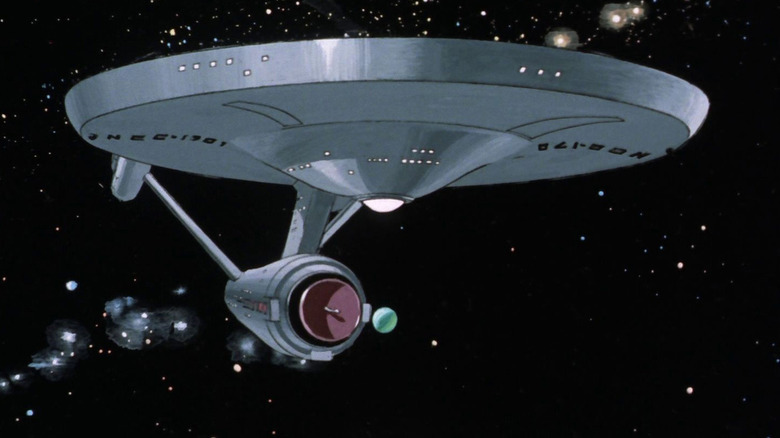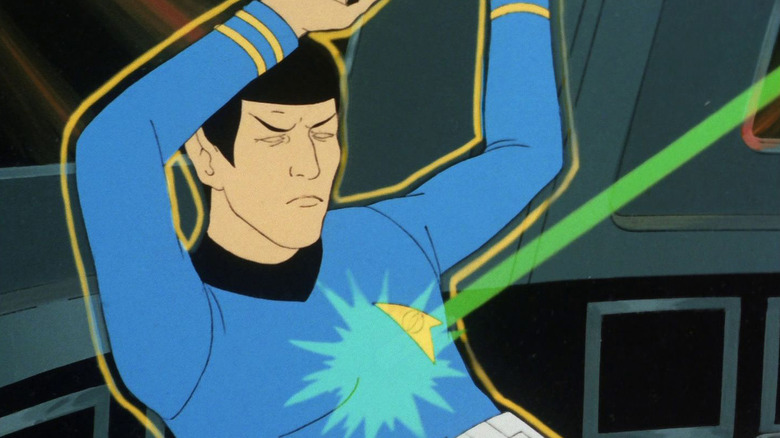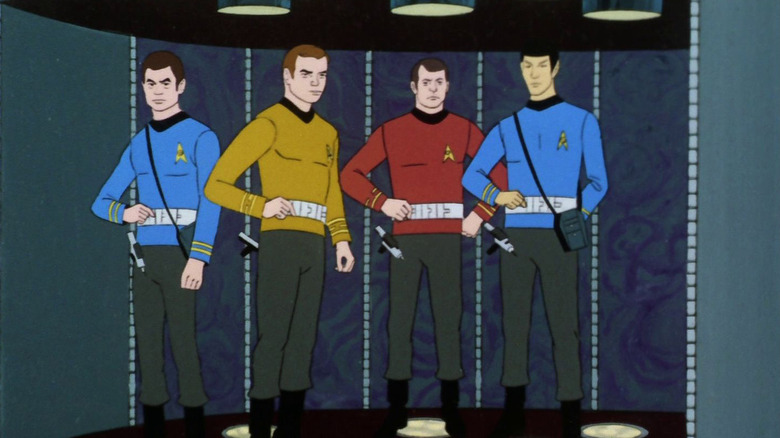A Forgotten Star Trek Spin-Off Is Still Worth Revisiting 5 Decades Later
Sometimes, even the most hardcore fanboys need to be reminded that certain facets of their own beloved sci-fi franchise actually exist. "Star Wars" fans, for instance, often need to be reminded that there are 16 movies in the series, and not just the nine that have Roman numerals in them.
(To quickly provide a list, the 16 movies include "Star Wars," "The Star Wars Holiday Special," "The Empire Strikes Back," "Return of the Jedi," "Caravan of Courage," "The Battle for Endor," "The Great Heep," "The Phantom Menace," "Attack of the Clones," "Revenge of the Sith," "The Clone Wars," "The Force Awakens," "Rogue One," "The Last Jedi," "Solo," and "The Rise of Skywalker." 16. I will hear no further arguments.)
Likewise, many Trekkies have to be reminded about the sheer volume of TV shows that the franchise has produced since its inception in 1966. As of this writing, there have been 13 "Star Trek" TV shows, with a 14th, "Starfleet Academy," on its way. The number goes up to 15 if you count "Very Short Treks" as a separate entity from "Short Treks." Likewise, there have been 14 "Star Trek" movies, counting this year's "Section 31." It may take a little bit of thought, but Trekkies can list all the shows in sequence.
Sometimes overlooked in these conversations is "Star Trek: The Animated Series," which ran for two seasons in 1973 and 1974. It was put out by Lou Scheimer's Filmation studio, and involved direct creative control from "Star Trek" creator Gene Roddenberry. Additionally, almost all of the original cast returned (Walter Koenig was, sadly, left out), as did many of the original show's writing staff. The series only ran 30 minutes, but it was, thanks to its animated medium, a purer — and perhaps better — version of the original "Star Trek." Its biggest hindrance was only that it looked so cheap.
Star Trek: The Animated Series was arguably better than the original show
To the show's credit, it actually had a relatively large budget for an animated series in the 1970s. It's just that Scheimer's studio, in order to work on a TV schedule, had to use a lot of static images and keep actual animated movement to a minimum, making for a show that was sluggish and stiff, at least visually. Also, like the original "Star Trek," a lot of musical cues were reused heavily, making the series seem same-y and almost campy at times.
But make no mistake, the writing was sharp and the story ideas were even more expansive than on the original show. It was also unbound by the fetters of live-action special effects. "Star Trek: The Animated Series" could now feature three-armed aliens, cat-like beings, underwater episodes, outsize monstrous gods, anthropomorphic plant beings, and a fifty-foot Spock. D.C. Fontana, a longtime "Trek" contributor, served as the show's story editor. Everything was in the right spirit.
The premise of "Star Trek: TAS" extended directly from the original series. It was set on board the U.S.S. Enterprise as it continued its five-year mission, and the same crew was still running the place. William Shatner, Leonard Nimoy, Nichelle Nichols, DeForest Kelley, George Takei, James Doohan, and Majel Barrett all returned to play Kirk, Spock, Uhura, Bones, Sulu, Scotty, and Nurse Chapel, respectively. Doohan and Barrett also played a lot of the show's guest aliens. Because the original "Star Trek" only lasted three seasons, the animated series could be seen as the canonical continuation and conclusion of the above-mentioned five-year mission. "TAS" didn't end with a final retirement or decommission of the Enterprise, however. It simply ended.
How did Star Trek: The Animated Series come to be?
The story is familiar to "Star Trek" historians: Roddenberry's original series wasn't always a rating bonanza, and only survived into its third season because of a concerted letter-writing campaign. During the show's third season, Lou Scheimer approached Roddenberry about making a 10-minute animated "Star Trek" spin-off series for kids. Scheimer's idea was to put the Enterprise crew on a new ship, the U.S.S. Excalibur, which would be commanded by a crew of teenage cadets, just now learning about the cosmos. (This premise would eventually be retooled for the 2021 animated series "Star Trek: Prodigy.")
Roddenberry and NBC had a pretty bitter relationship during the third season of "Star Trek," though, and Scheimer couldn't get his series off the ground. But after "Star Trek" was canceled and went into syndication, it began to attract a large audience of passionate devotees. Interest remained high. By 1973, NBC was interested again, and Scheimer and Roddenberry worked out a pretty sweet deal to bring "Star Trek" back in animated form. The show was guaranteed 22 episodes over two seasons, and it was to be allotted a very definite budget. A lot of the original "Star Trek" writers returned, intrigued by writing bigger, wilder stories for the new medium.
In being only 30 minutes, "The Animated Series" cut out all the romantic subplots and often-dull interpersonal exchanges of "Star Trek" in favor of actual plotting and expansive sci-fi ideas. As a result, it was tighter and more ambitious. This was a series that posited that the Devil, who lives at the center of the galaxy, might have outlived his statute of limitations and is now worthy of legal redemption. This was a series that saw Kirk telling an ancient serpent god that gods are no longer needed in Trek's future utopia. Heady stuff, and I could go on.
"Star Trek: The Animated Series" is available on Paramount+, and should be seen immediately. It's more than just a footnote. It's a great series.


